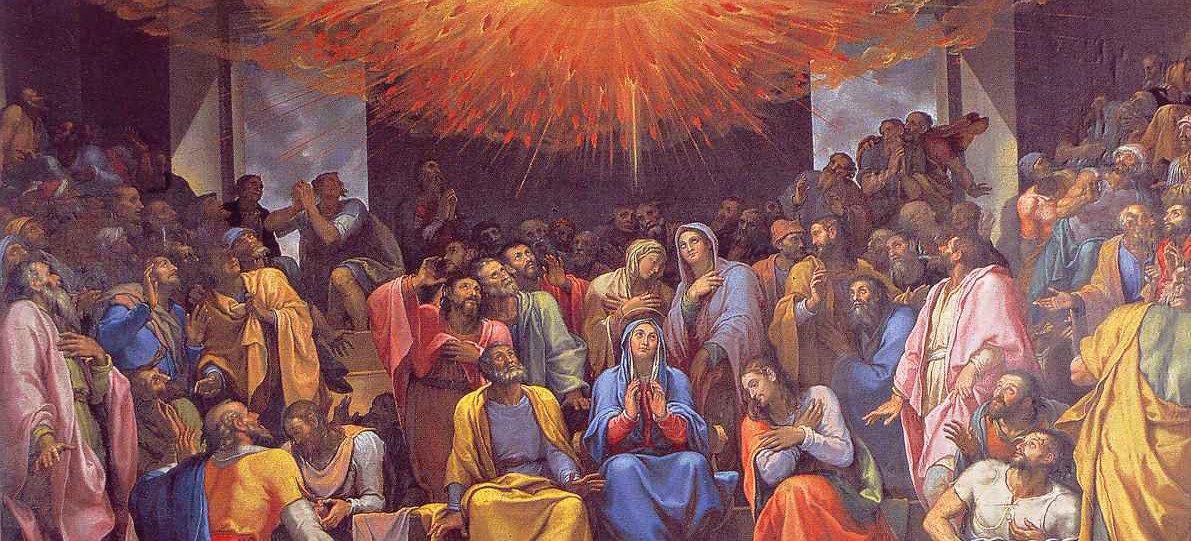
A significant observation on which much of my dissertation hinges is that Eph 4:11-16, which uses obvious body imagery, also uses temple imagery. At least five Greek roots in Eph 4:11-16 that describe the church are also used in Eph 2:19-22 to describe the church explicitly as a temple. (Note here how Greek Matters!)
| Ephesians 2:21–22 | 4:11–12, 15–16 |
| ἐν ᾧ πᾶσα οἰκοδομὴ συναρμολογουμένη αὔξει εἰς ναὸν ἅγιον ἐν κυρίῳ,
ἐν ᾧ καὶ ὑμεῖς συνοικοδομεῖσθε εἰς κατοικητήριον τοῦ θεοῦ ἐν πνεύματι. |
Καὶ αὐτὸς ἔδωκεν …
εἰς οἰκοδομὴν τοῦ σώματος τοῦ Χριστοῦ … ἀληθεύοντες δὲ ἐν ἀγάπῃ αὐξήσωμεν εἰς αὐτὸν τὰ πάντα, ὅς ἐστιν ἡ κεφαλή, Χριστός, ἐξ οὗ πᾶν τὸ σῶμα συναρμολογούμενον καὶ συμβιβαζόμενον διὰ πάσης ἁφῆς τῆς ἐπιχορηγίας κατ᾽ ἐνέργειαν ἐν μέτρῳ ἑνὸς ἑκάστου μέρους τὴν αὔξησιν τοῦ σώματος ποιεῖται εἰς οἰκοδομὴν ἑαυτοῦ ἐν ἀγάπῃ. |
| Figure 1: The Church as the Temple. | |
This observation has important implications for the citation of Ps 68:19 (MT) is Eph 4:8, but I was also moved by the significance of this observation for ministry and how we treat those in our churches. As I conclude in the following citation from the last chapter of my dissertation, the temple is no longer a static concept, but by combining it with body imagery, we see that the temple is now an organic structure whose growth depends on the proper functioning of each member who has his or her own unique gifts (4:7).
If you want the church to grow, you must help each member find their own unique gift and help them exercise it properly. Thus, sanctification is not only personal, but corporate.
Your personal growth depends in part on the proper function of other members of Christ’s corporate body.
Ephesians 4:7–16 also reminds us what Paul says explicitly elsewhere, that the church is the temple of God (1 Cor 3:16; 6:19; 2 Cor 6:16; Eph 2:21–22). The temple is only one corporate figure that Paul uses to describe the church. Although the body imagery is evident in Eph 4:11–16, and although Paul’s use of body imagery throughout his corpus has received much attention, rarely does anyone see the body and temple imagery intertwined.
But Paul’s mixture of body and temple imagery grants us a better understanding of what it means for the church to be God’s temple. We are not a static building that is complete and fully mature. Rather, as a body that is knit together by sinews and joints and that grows into maturity if nourished and exercised properly, so also the temple of God in this age of the church is an organic structure that shifts and grows with every new member added to it. The work of the teaching–ministers equips each member of the temple so they will all attain unity and maturity in Christ (4:11–13).
Yet, ultimately, it is the proper functioning of each member of this temple that causes the growth of the body (4:16). The temple of God is no longer a static building to which the nations must flow to bring their praises, but now the temple is an organically maturing body that takes itself to the ends of the earth as a light to the nations. Jesus said “the hour is coming when neither on this mountain nor in Jerusalem will you worship the Father” (John 4:21), and indeed that hour has now come.

3 comments